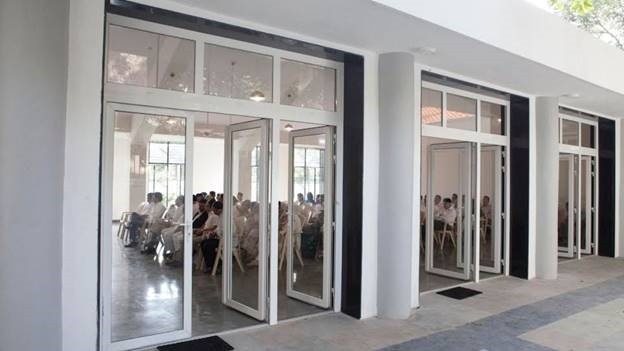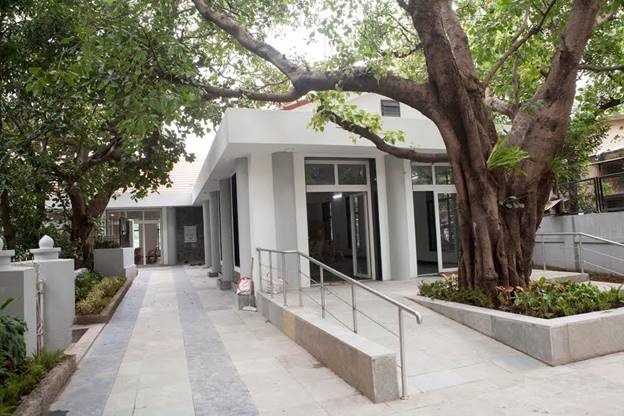Worli Crematorium’s Prayer Hall, Facilitating Post-Death Rites For Parsi-Zoroastrians, Celebrates 8 Years Of Service
Bodies that were interred in the Dakhmas, or Tower of Silence, in a system called Dokhmenashini, to be eaten by carrion birds, were not being disposed off fast enough, creating unhygienic conditions.
Article by Manoj Ramakrishnan | Free Press Journal
Mumbai: Worli Crematorium’s Prayer Hall, Facilitating Post-Death Rites For Parsi-Zoroastrians, Celebrates 8 Yrs Of Service | Manoj Ramakrishnan
The Prayer Hall at the Worli municipal crematorium, which offers a place for the after-death rites of Parsi-Zoroastrians who do not want to be interred in the Tower of Silence, or Doongerwadi, on Malabar Hill, has completed more than eight years, but opinion is divided on the facility’s success, though the number of Parsis opting for cremations has nearly doubled during the period.
Before the Prayer Hall was set up, it is estimated that 7-8% of funerals among Parsis in Mumbai were cremations. The Prayer Hall Trust estimates that between 15-20% of all funerals now take place at crematoriums. Data on funerals at the Prayer Hall show that the number of cremations has grown from 33 in 2015, the year when the Prayer Hall was set up to 90 in 2019 and 66 in 2020. Data is available for the subsequent years.
Why need for crematorium arose
Dinshaw Tamboly, a former trustee of the Bombay Parsi Punchayet (BPP), who is now a member of The Prayer Hall Trust said that out of the average 650 funerals in Parsi-Zoroastrian community in Mumbai annually, between 100 and 120 were cremations.
The need for alternate funeral arrangements was felt after the decimation of India’s vulture population. Bodies that were interred in the Dakhmas, or Tower of Silence, in a system called Dokhmenashini, to be eaten by carrion birds, were not being disposed off fast enough, creating unhygienic conditions.
Mumbai: Worli Crematorium’s Prayer Hall, Facilitating Post-Death Rites For Parsi-Zoroastrians, Celebrates 8 Yrs Of Service | Manoj Ramakrishnan
The Tata funeral
Though it opened in August 2015, the Prayer Hall project had its beginnings in the 1980s when J R D Tata, the patriarch of the Tata Group, called up the then Municipal Commissioner Jamsheed Kanga about a suitable crematorium in Mumbai for the funeral of his brother D R D Tata. Many dignitaries were expected at the funeral and most of the city’s municipal crematoriums were in a shabby condition.
The Dadar crematorium was chosen for the Tata funeral but a search continued for an alternate place for funerals of Parsi-Zoroastrians who did not want to be interred at the Dakhmas. Dinshaw Tamboly, trustee of The Prayer Hall who was a trustee of the BPP, the apex community trust that manages the Tower of Silence cemetery, between 1996 and 2008, said that there was a debate in the trust about whether alternate funeral methods like cremation should be allowed at the cemetery. The idea was rejected after opposition from the clergy and orthodox members of the community. Those wanting an alternate funeral method were asked to make their arrangements.
Worli municipal crematorium becomes Prayer Hall
The Worli municipal crematorium, which had space, was chosen as the site for The Prayer Hall which was registered in August 2013. The A H Wadia Trust gave a founding grant of Rs one and a half crores.
Framroze Mirza, the Zoroastrian priest in charge of the religious services at the Prayer Hall said that there was a spike in the number of cremations during the Covid epidemic when bodies of those who succumbed to the disease were not allowed to be interred in the Tower of Silence. “Otherwise the number of funerals at the Prayer Hall has been fluctuating. In some months there are eight to 10 funerals, but there are months where there are only one or two ceremonies,” said Mirza who is assisted by two other priests.
Though the number of funerals is not high, the Prayer Hall has fulfilled the needs of those who wanted an alternate method of funerals, said Tamboly. “It is a service that has been provided because people wanted it. The Bunglis (prayer halls) at the Tower of Silence could be used because it was out of bounds for those who opted for cremation,” said Tamboly.
Facility becomes blessing
Jehangir Patel, editor of the community magazine Parsiana, said that the facility has ‘”It has been a real blessing to people who wanted an alternative to Doongerwadi. Earlier, they (The Tower of Silence) would not allow even prayers of cremated persons to be done at the prayer halls in Doongerwadi. It was a nightmare for families of those who opted for cremation,” said Jehangir Patel, editor of the community magazine ‘Parsiana’. “The number of people cremated may not have increased, but the quality of life for families of those opting for cremation has improved. The services at the Prayer Hall are institutionalised and getting a Hall or a priest for the post-funeral rites is not a problem anymore.”
Patel said that the number of people opting for cremation has not increased substantially though the number spiked up in the COVID years when bodies of those who died in the epidemic were not allowed to be consigned in the dakhmas. Non-Zoroastrians are not made to sit separately like in Doongerwadi. “It was embarrassing (at the Tower of Silence) as non-Parsi friends and relatives were made to sit separately. Non-Parsis were treated as outcastes,” added Patel.
Dokhmenashini funeral system
The Dokhmenashini funeral system relies on the sun and carrion birds to dispose off dead bodies. The last time the birds were found in significant numbers at the Tower of Silence was in the 1990s. The nationwide decline in the population of vultures has been linked to diclofenac, a drug used in veterinary medicines. The drug is blamed for causing kidney failure in birds feeding on carcasses of cattle treated with it.
Though the drug is now largely excluded from veterinary preparations, it is still used in pain-killer medicines prepared for humans. Three species of vultures are found in India and ornithologists estimate the population of the birds has collapsed by 95 per cent. A vulture-breeding programme was set up in Pinjore near Chandigarh.


